What is the difference between arthritis and osteoarthritis?
Many people confuse names because they don't know the difference.
These diseases are characterized by joint damage, but there is a significant difference between them.
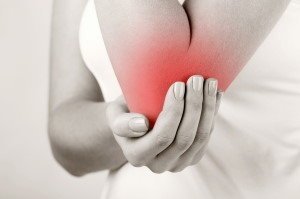
What is the difference
Arthritis can affect any joint. In many cases this disease is a consequence of arthritic lesions. This is one of the consequences of improper, premature treatment for osteoarthritis.
For a more precise understanding of both diseases, the differences are each specific:
- Arthritis refers to various inflammatory changes in the joints;
- A more correct name for the second disease is osteoarthritis. It differs in that the lesion affects the cartilage tissue.
The mechanism of the course of 2 diseases
Arthritis - classification of varieties
Arthritis is the name of a specific group of joint diseases.
It is characterized by the manifestation of swelling, inflammation. The inflammatory process leads to the production of enzymes that adversely affect the joint and eventually destroy it. In addition to inflammation, an adhesive substance appears in the joint itself - fibrin.
This is a pain at rest and can be relieved by moving. When a person gets out of bed in the morning, they feel indomitable to remove that feeling that they need to dispel. Most often, the disease affects the upper and lower extremities.
There is a division of the disease: degenerative or inflammatory. This classification is based on the type of disease.
A disease that affects joint cartilage is known as degenerative arthritis. Cartilage is used to connect and move bones.
There are different types of it:
- osteoarthritis;
- Traumatic arthritis.
The inflammatory course of the disease is characterized by damage not to the cartilage, but to the connective tissue. Inflammation occurs in the interior of the joint capsule.
Break it down into the following types:
- Caused by an infection;
- Rheumatic;
- reactive plan;
- gout.
To understand the difference between arthritis and osteoarthritis, one should find out that osteoarthritis is not comparable to any other diseases included in the concept of arthritis.
Stages of progression of osteoarthritis
Osteoarthritis, but more precisely and correctly it is called osteoarthritis. This is a chronic lesion of the joints that deforms them over time. The main cause of deformities is irreversible damage to the cartilage tissue.
The peculiarity of the disease is that destructive processes affect the cartilage tissue, followed by a violation of its integrity.
Osteoarthritis is a disease in which the cartilage in the joint is mechanically removed until it disappears completely. The bones are exposed and their friction is already occurring.
The disease is long-term and chronic.
There are two development stages:
- Primary, detected in 42% of patients. It does not occur due to joint injuries, but rather due to excessive physical exertion or hard work. Men who have been doing manual labor for a long time get sick with it.
- Secondary, develops in more patients than in the primary stage and is associated with the consequences of trauma, on the basis of which the mechanism of destructive processes is triggered.
Causes and differences
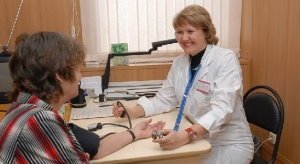
Causes of Arthritis
The main conditions of the disease can be classified:
- Excessive exercise or work;
- Various infectious processes, including hidden;
- Any kind of allergic reaction;
- Permanent damage to the same joint;
- metabolic disorders;
- lack of vitamins;
- disorders of the immune system;
- post-traumatic syndrome;
- Hereditary disposition.
Basic causes and main signs of osteoarthritis
The background to this disease is not well understood. Only people of retirement age are sick. The disease is influenced by age characteristics.
Trauma is seen as a different version of osteoarthritis. The joint with her should be treated. If this does not happen, signs of osteoarthritis damage will appear after a few years.
Clinical presentation and differences in symptoms
Let's turn to a more detailed examination of the symptoms of joint disease.
pain symptom. Arthrosis in the early stages is not characterized by a constant level of pain. It only appears during intense exertion or joint movement. When the load decreases or the movement stops, the pain goes away.
A person attaches no importance to such manifestations, so the symptoms may increase and the disease may progress.Pain occurs even with light exertion. Decreases when a person takes a comfortable posture.
Systemic pain occurs in the area of the affected joints. This can involve long walks, exercise, or physical activity.
Pain sometimes occurs in the affected joint after a long period of rest. If it is arthritis, the pain manifests itself both at rest and during physical activity.
This disease torments a person in the morning hours. Severe pain occurs between 3 and 5 a. m.
Crunchy sound. Dry crunch is linked to osteoarthritis. When the cartilage breaks down, bone friction begins. The sound becomes coarser and more intense, which manifests itself with the slightest movement of the diseased joint.
Demonstrate the stiffness of the movement. Arthritis severely restricts the movement of the two affected joints and the overall mobility of the entire skeleton decreases.
Disturbance of the shape of the diseased joint. Both arthritis and osteoarthritis can deform a joint. However, the deformation process itself occurs in different ways. With osteoarthritis there is no reddening or inflammation. The joint does not feel hot. Deformation is also known as cold. Swelling can be expressed at the time of exacerbation of the disease, accompanied by aching pain. 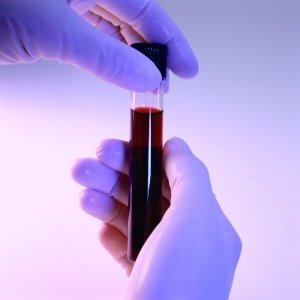 Arthritis changes the joint, it gets hot, redness and swelling appear. The pain is acute, occurs when palpating the affected area, nodular formations can be palpated.
Arthritis changes the joint, it gets hot, redness and swelling appear. The pain is acute, occurs when palpating the affected area, nodular formations can be palpated.
What the blood test will tell you about. The blood count for osteoarthritis does not change. An increase in white blood cell count and a sharp increase in ESR are signs of inflammation seen in arthritis. Elevated leukocytosis indicates that the body is prone to infection and inflammation occurs inside.
In the biochemical blood test for arthritis, there is an increased number of inflammation markers, and in osteoarthritis they do not change significantly.
place of pathology. Osteoarthritis affects the large joints in the body. These are the knees, hips, and the spine. From this derive the names of the disease: gonarthrosis (damage to the knee joint), coxarthrosis (the hip joint is affected), spondyloarthrosis (the pathology is localized in the spine).
Arthritis, called rheumatoid arthritis, poor (poor) mobility in the morning is one of the signs of rheumatoid arthritis. After waking up, a person feels stiff in the area of the hands. The wrists are affected both individually and simultaneously. With rheumatoid or psoriatic arthritis, there may be signs of inflammation in the finger joints - swelling (swelling) and redness.
There are a number of other signs that you can recognize arthritis.
If a finger swells and turns red on an upper or lower limb, arthritis can be suspected. Arthritis manifests itself as severe pain in the knees and ankles. Pain can also occur in the big toes.
It is accompanied by swelling and redness of the joint. Symptoms of pain appear regularly, suddenly increase, and then go away. Arthritis of infectious origin goes away with an increased body temperature, general fatigue, a person breaking through sweat, chills, all bone aches and pains.
Inflammatory processes that affect the joints have a negative effect on important internal organs, the heart, kidneys and liver.
Additional signs of osteoarthritis:
- Aseptic necrotic areas;
- Strong muscle tension;
- Partial immobilization of the affected joints;
- Slow resorption of cartilage tissue, bones and friction between them;
- Inflammatory processes in the tissue areas surrounding the painful joint.
Influence of gender and age of the patient on the presence of a joint disease
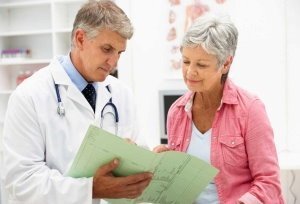
Who does arthritis affect?
The percentage of arthritis cases is low, 2% of the total world population.
Women between the ages of 35 and 50 are more prone to this.
Small joints are more often affected.
Whom the disease overtakes
Osteoarthritis does not go easy on the elderly, regardless of whether it is a woman or a man. Retirees suffer from an illness after they retire. The total number of cases is about 20% of the world's population.
Different diseases - different methods
The specialists responsible for the treatment are called orthopedic trauma surgeons. Arthritis requires treatment from various specialists.
Osteoarthritis and how to deal with it
Pain sensations are relieved for a short time with the help of anti-inflammatory drugs. However, they have no influence on the course of the disease.
The main goal of the treatment is the regeneration of cartilage tissue. The main drugs that help with this are chondoprotectors.
With the help of these drugs, it is possible to cope with inflammation of the joints, regulate the metabolism in the muscles and restore damaged areas.
If conservative treatment does not produce positive dynamics, endoprosthetics can be used.
The essential thing is that a surgical procedure is performed to replace a diseased joint. Osteoarthritis is a serious and incurable disease because the ongoing processes are irreversible.
The patient must follow the doctor's recommendations on proper nutrition and therapeutic exercise - this is a mandatory stage of treatment. Exercise classes, drug treatment, therapeutic measures - all of these lead to a positive effect.
What medicines and prescriptions does the doctor give the patient?
For uncomplicated conditions, the rules are as follows:
- hormone therapy;
- medicines to relieve inflammation;
- pain relievers;
- Manual therapy, massages;
- series of exercises;
- Physiotherapy - with ultrasonic waves and thermal methods.
A complicated course of the disease requires additional medication. Sometimes doctors insist on getting rid of the problem surgically.
Who needs the service of a surgeon? Patients with a completely destroyed joint that cannot be restored must be completely replaced. Depending on the degree of destruction of the joint, both a full and partial replacement will be used.
Treatment of arthritis
It all depends on what form the disease has taken. Therapy methods are different, they can be combined, changed and selected, which will give the desired result in treatment.
Lifestyle recommendations:
- Adequate nutrition,
- Avoid alcoholic beverages
- Decrease in physical activity.
From the drugs, antibiotics are prescribed and anti-inflammatory drugs are injected into the joint.
Moderate gymnastics and physical therapy are helpful in treatment.
The main thing in treatment is to get rid of the inflammatory process and improve the body's resistance. They use vitamin supplements, diet foods. It includes seafood, dairy products, and poultry.
Arthritis is a direct contraindication to sunbathing. Wearing high-heeled shoes can aggravate the course of the disease and exclude it from the closet.
Illness lays down its own prohibitions: alcohol and hard physical work must be a thing of the past. Health is too expensive to disregard doctors' recommendations!
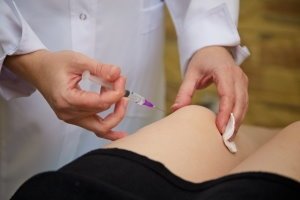
Expected disease outcomes
Diseases differ in their possible ends.
Arthritis is completely curable when its cause is eliminated.
Osteoarthritis is a chronically sluggish disease that offers no chance of full recovery.
Simple folk remedies
In addition to drug treatment, it is useful to use reliable traditional medicine recipes. Often even doctors advise their patients to combine traditional medicine with folk medicine. This speeds up the healing process.
When treating arthritis, it is important to rethink your daily routine and diet. These two essential pillars of lifestyle, if properly organized, can have a significant impact on the healing process.
Here are 6 rules you can follow to help a patient:
- Observe the right diet. Revise the menu so that it can normalize the amount of nutrients, vitamins and microorganisms consumed per day.
- To normalize the diet, it is useful to saturate the menu of the day with fresh vegetables and fruits, and it is better to exclude salty foods altogether or use little salt in cooking.
- Avoid hot spices in ready-to-eat foods and in home cooking.
- Refuse the use of foods from which, in a certain case, a certain person will quickly gain excess weight. These foods contain high carbohydrate meals.
- It is important to adjust the weight. If there are extra pounds, it is useful to get rid of them as soon as possible, as this will negatively affect the lower limbs due to the high load.
- Stop drinking alcohol, as it is negative for the body and contributes to the rapid development of drug rejection.
Among the folk remedies, recipes are particularly effective:
- The use of birch buds is helpful in treating arthritis. They are poured with boiling water, and the resulting mixture is brought to a boil, wrapped in a warm cloth and allowed to brew. Take half a glass three times a day before meals.
- The burdock root is crushed, placed in a glass and poured with vodka. Insist in a dark place and regularly shake the contents of the container. The resulting solution is smeared with the place where the pain is greatest.
Home remedies and eating habits
With osteoarthritis, it is useful to saturate the daily menu with oily fish. The omega-3 acids contained in it quickly eliminate the inflammatory process and relieve pain. As an alternative, we recommend using fish oil, which is no less effective than oily fish.
Milk and dairy products are good for you, but skimmed milk is best. Cheese and cottage cheese should be sufficiently saturated with calcium. The daily diet should contain enough fresh fruits and vegetables.
If you have osteoarthritis, make sure that the body receives enough vitamins. For this it is useful to drink a number of vitamins. Drugs whose effects are complex should be preferred. Some vitamins help absorb others more quickly. There are such complexes on sale where this moment is taken into account. This helps to ensure that vitamins are absorbed quickly and that no salt build-up occurs in the joints.
Proper nutrition, weight management and constant monitoring of the condition of the skeletal system will help manage the disease, but will rule out any cases of relapse in the future.
Traditional medicine offers ways to fight the disease:
- Exercise and exercise regularly. You don't have to try too hard, exercise should be moderate and only bring joy in your performance.
- It is useful to go swimming or just do various exercises in the water.
- compressions are effective. With the development of the inflammatory process, warm options are useful, and cold, for example, ice, is suitable for pain relief.
- Medicinal baths with an anti-inflammatory process are especially useful in the fight against this disease. Medicinal plants such as eucalyptus, marigold, sandalwood oil and St. John's wort are suitable for them.
Recommended orthoses
Knee pads are used to combat these diseases. Patients who used them found that, along with other methods of treating the disease, they really helped manage painful sensations.
The choice of equipment is different, so a model is selected that is suitable for a particular patient, taking into account the course of the disease.
Each model has its own purpose. If you make a mistake in choosing, the device will not bring any results because it is simply impossible to wear.
A closed knee brace is a device that surrounds the lower limbs. They are made of elastic material, some models have an additional insulation layer. The option is good if there is constant pain in different places. They aim to anchor the knee part of the leg all around. Provides significant walking relief.
Open models have a cup cutout. They help with walking, relieve pain when bending the leg. They are useful for people who have to go up the stairs. The models have a rigid frame, they are made of elastic material. These devices help maintain the shape and position of the leg.
Disease prevention
As a preventive measure, it is useful to maintain a healthy lifestyle. Moderate exercise is helpful. Quitting smoking and drinking alcoholic beverages will greatly reduce your chances of developing these serious diseases.
It is much easier to prevent a disease from developing than it is to waste time, effort, and money treating it. If we talk about arthritis and osteoarthritis, then for prevention it is useful to timely and completely treat all kinds of infectious diseases. Early treatment of these diseases can provoke the development of serious problems with the lower extremities in the near future.Make sure that the body is supplied with sufficient quantities of all vitamins. Avoid hypothermia, adapt to the weather. Make sure the joints are loaded as much as is allowable. It shouldn't be over the top. Overweight persons. In general, it is better to get rid of extra pounds as soon as possible, as they negatively affect the condition of the entire organism.
Diets should be planned so that sufficient nutrients are supplied to the body.














































